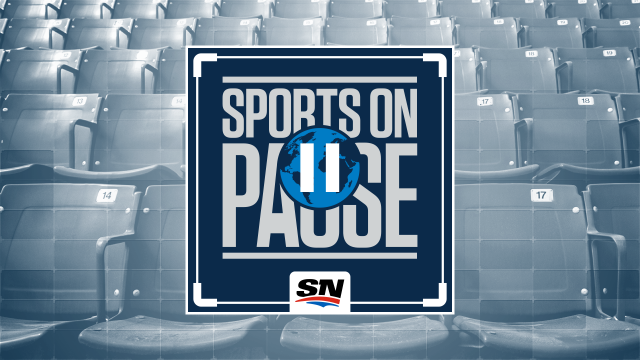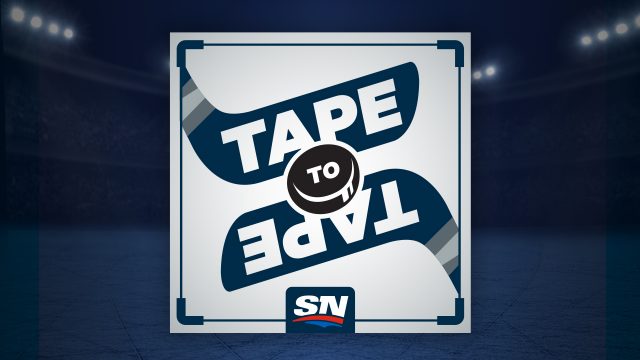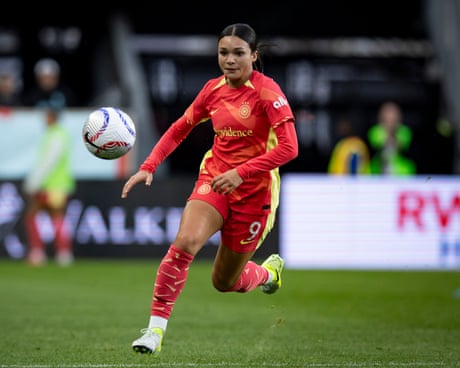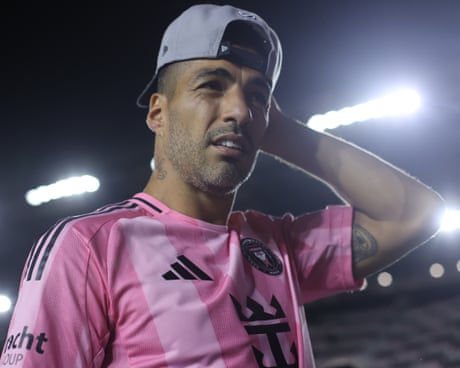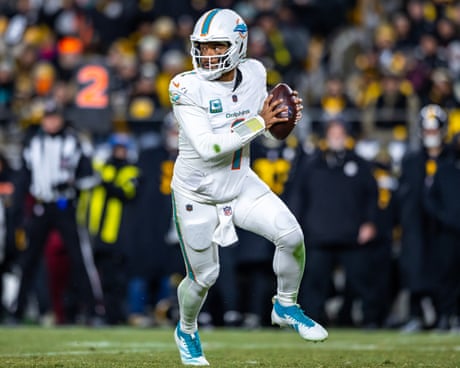
• The challenge of NHL broadcasts without fans
• Why league could go straight to 24-team playoff
• AHL expected to cancel season Friday
Exciting start this week: I interview my boss. So if you don’t hear from me in the next few days — you’ll know he didn’t like what I wrote.
One of the things many of you are wondering is what the broadcasts will look like whenever the NHL returns. No one is expecting fans in the stands if the 2019–20 season resumes over the next few months. That eliminates atmosphere and the tension created in the crowd as the games get more important and the smallest on-ice event has enormous impact.
How do you make up for that?
“We’ve had numerous meetings with the league,” said Rob Corte, Vice President of Sportsnet and NHL Production. “The first thing that we all talk about is safety. The existing broadcast environment is not a place where you can properly practise social distancing.”
Mobile trucks are jammed with people. Off the top of my head (and plenty of co-workers will reach out if I’m wrong), only the audio person would currently be in an acceptable space. He or she has their own area. Everyone else is packed tight.
“In the NFL, there’s one broadcast per game. In the first round of the Stanley Cup playoffs, there can be three broadcasts. That’s a lot of people in a small amount of space. So what we are talking about is creating a ‘world feed,’ similar to the Olympics. A heavily resourced broadcast for everyone to take. We are currently collaborating on what this would look like.”
For example, Sportsnet is considering three options.
The first is a telecast sent to every market with generic graphics provided at the rink and announcers on-site. These might not be my regular Sportsnet teammates. Instead, they might be NBC announcers or, if the games are in Carolina, John Forslund and Tripp Tracy.
The second option is what’s called “taking a split.” Each market still takes the world feed, but — if allowed on-site — can supplement it with their own truck. That would allow for on-site talent, graphics and possibly an extra camera or two they could control.
And the third option is a “clean” feed sent to everyone — national and local. No graphics, no commentators. Each team’s crew could add their own “look” at their production facilities, with the action called off a monitor. My guess is that’s the most likely scenario.
“We’re all looking at what model makes sense for everybody,” Corte says.
Okay, but once that’s decided, how will the broadcasts look, sound and feel?
“We are discussing everything. From virtual crowds to how we will shoot the game differently. Traditionally, when something happens in the game, producers are looking for reactions. In the crowd, on the benches, on the ice. Now we won’t have the fan element. Gives us the opportunity to look at new camera positions. Can we increase the complement of robotic cameras? This allows us more cameras with less operators. Can we mount more of them?”
“Normally, we have designated camera positions, so we’re not obstructing fans. With no fans, can we move cameras into different spots? It’s not a definite, but the spidercam is used in tennis and football. It never works in hockey because the scoreboard is in the way. With no fans, can we move the scoreboard to the top of the rink and give everyone a different look?”
What about sound without the regular ambience?
“We’re talking about how to create it. It won’t be 100 per cent authentic, but can we amplify the sounds of the game? And this is something the players and the league will have a say in. How much of that on-ice talk should we bring into the home?”
One of the ideas I’ve heard is playing music during the game, hiring a DJ (or something like that) to create atmosphere. Corte said that has been mentioned.
“What’s going to happen with commercial breaks? Should they be shortened? Same with intermissions. One of the big factors is sales obligations.”
Player interviews are another question. Headsets are a hygiene issue. Maybe you set up a studio with one interviewer sitting six feet from the guest. Microphone on a hockey stick, like some reporters use now in scrums. Would be a fun look.
I’m also a big believer that it’s time for “second screen” gambling games for fan engagement. Each broadcast would have a contest that fans could enter online or through their smartphones. Okay, Canucks fans, who is scoring your next goal? Okay, Oilers fans, are you killing this Flames’ power play? Points for correct answers, prizes for highest personal totals.
“What I find fascinating is the real-life situations,” Corte finished. “It’s a commercial break. You have 90 seconds, and someone from the truck rushes to the bathroom. Safety guidelines suggest you take 25 seconds to wash your hands. In the new world, can you do it? We are also looking at plexiglass between workstations in the truck. A switcher (the person who changes the shot on your screen from camera to camera), can they still do the finger manipulation with the gloves on? All of our communication is through headsets. Do we have the proper cleaning methods? There are so many questions that need to be answered.
“It always comes down to, ‘How do we do this safely?’”
31 THOUGHTS
1) New Jersey interviewed Dallas Stars assistant coach John Stevens for its head coach position, currently held by Alain Nasreddine.
2) It’s early in the process, but it stood out that the NHL’s statement about Brendan Leipsic’s leaked Instagram comments also mentioned Jack Rodewald, another member of the message group. I’m not sure anyone expected that, but it shows the Florida prospect is also facing discipline. Always assume anything you write can end up everywhere.
3) This is a personal opinion, but with each passing day I believe more and more that, if the NHL does return sometime this summer, we are going to punt the regular season and go to a 24-team playoff. There are three reasons. First is safety. NBA Dallas owner Mark Cuban said he won’t be opening the Mavericks’ practice facility because “we can’t ensure anyone’s safety.” We don’t know if there will be the testing and/or personal protective equipment capacity to play at all, but if you drop seven teams, that eases how much is necessary. (Think of all of the gloves, masks, etc., that training staff, equipment staff and team physicians will need.)
Second, timing. Phase 2, featuring an opening of training facilities for small groups, may not happen until June. Even with 2020–21 pushed back to December or January, we’re not overflowing with runway. The players rightfully made it very clear they don’t want months of quarantine without their families. If you’re not going to include them in the hotel setup, you can shorten the amount of time apart by dropping the remaining regular-season games.
Third: publicly and privately, players who are out of the post-season race have made it clear they are not thrilled about returning for meaningless games. One exec said he thinks it would be unfair if the Atlantic and Pacific divisions featured watered-down teams in any kind of a playoff race. Drawback: players on those teams won’t play a game for, what, nine months? But this is far from a perfect time.
4) Assuming the NHL does go to this format, the West teams are easy to figure with a gap between 12th-place Chicago and 13th-place Anaheim. The East has Montreal 12th with 71 points in 71 games, Buffalo and New Jersey next — 68 points in 69 games. That gives the Canadiens the edge in points percentage. Even if you wanted to make it level, Montreal lost its last two before the pause, so they’d still be at 71 points in 69 games.
I don’t know if you could do two hubs with 12 teams apiece. Sportsnet’s Mark Spector reported last week about the possibility of a playoff format featuring the top six clubs from each division going to one of four hubs.
If it does turn out the way I’ve described, my guess is you see a slight tweak. Rangers to the Atlantic makes sense to even out the East. You could do Chicago to the Pacific, unless you feel it is fair for the lowest seed to be in the same division as St. Louis, the West’s number one. In that case, you could move Minnesota (points percentage) or Winnipeg to the Pacific. (The Jets played two more games than the Wild and Nashville — both wins. Taking away four points drops Winnipeg below the other two.) Calgary, Edmonton and Winnipeg? Holy Smythe Division, Batman.
5) One player on hotel quarantine: “It better have the best hospitality suite of all time.”
6) The NHL and NHLPA agree that around 45 to 55 days will be needed in the “off-season” between any playoffs and the start of 2020–21.
7) One thing that has not been discussed yet at the league level — but will be at some point — is how to protect the coaches. They are in close proximity to a group of sweaty players. Twelve head coaches are at least 55. Five are older than 60. (Several assistants are above 60, too.) The medical professionals will lead the way on this, but it is not an insignificant concern.
8) Will on-ice officials be wearing masks when play resumes? More importantly, how will this affect Wes McCauley’s replay announcements?
9) There’s one thing about a potential June draft I don’t get. If this is about television, why remove 10 teams from winning the lottery? It is the biggest made-for-TV event on the calendar, a big success from a fan-interest standpoint. You want it to be as dramatic as possible. One theory: the league considers it a remote possibility that one team could win the number-one pick and the Stanley Cup, so it suggested something that clubs might like even less. No decision this week would mean the date will be pushed later than the hoped-for June 5–6.
10) The NHL should also consider a “schedule reveal” show when it is time to play. Unveil who is going where, and which cities will be hubs.
11) It’s not high on the radar now, but one of the developing storylines from the financial effects of COVID-19 is the immediate future of scouting. If the draft does happen before June 30, teams will not have to extend the contracts of scouts that end on that day. It is not an insignificant number.
What has many of them concerned is how many leagues might not start next year on time. Will there be any hockey to scout? Will NHL clubs lay off their staff until enough resume? There are European staff members to handle that part of the world should it resume quicker than North America. There are some teams pouring lots of money and resources into scouting. Will that continue?
12) If the CHL does start before the NCAA, what will key prospects decide? The CHL can decide when to begin as an entity, while the NCAA’s decision is in the hands of college presidents. These players can attend CHL camps, as long as they pay their own way, but they cannot appear in so much as an exhibition game.
Junior expert Sam Cosentino says 19 of the WHL’s 22 first-round picks have signed standard player agreements, which is a higher pace than normal. OHL Sault Ste Marie is bidding for the Memorial Cup against Oshawa. The Greyhounds own the CHL rights to Boston first-rounder John Beecher (NCAA Michigan) and Montreal first-rounder Cole Caufield (Wisconsin). I’m not suggesting those players are considering leaving for Canada, but they (and so many others like them) have development choices to make. It’s a tough spot for them.
13) Now that their dispute has poured into the public domain, it’s difficult to see how the Canucks and the team’s director of amateur scouting, Judd Brackett, can continue to work together — even for the next seven weeks. Brackett’s contract is up; negotiations have gone nowhere.
Sportsnet 650’s Satiar Shah has done a lot of reporting on this issue; Iain MacIntyre confirmed Wednesday the wedge deepened because of “autonomy-based” concerns and “whether Brackett feels he has enough control over his department.”
It’s become very personal. Clearly, neither the Canucks nor Brackett are comfortable with each other. I wonder if the solution is Vancouver letting Brackett go, but not allowing him to work anywhere else until July.
14) With the NBA considering Orlando’s Disneyworld as a host site for resumption of play, one source said he heard that, at one point, Disneyland was suggested as an NHL site. It makes sense. Lots of hotel rooms, and you could use Anaheim and Los Angeles facilities. But the situation in California didn’t allow it to be a possibility.
15) There’s been a request for NHL clubs not to be allowed to play in their own city if it becomes a hub.
16) One exec, when I mentioned this: “We’d play on Jupiter right now.”
17) After the draft, will more prospects consider skipping bonuses for a faster path to the NHL? We know the cap is going to be tight. Rasmus Sandin got his chance in Toronto because he took salary only; Nick Robertson isn’t far away.
18) Boy, were some teams sour at the Maple Leafs landing Finnish defender Mikko Lehtonen. There was a lot of interest. I’d be lying if I said I’ve seen much of him, but his talent is widely respected. Jokerit indicated he had another year left on his contract, so several potential NHL destinations peeled off. Toronto was persistent.
Another team indicated they were told Lehtonen would be let out of his contract if he found a situation he wanted. That fits with a second organization indicating that when Jokerit announced Lehtonen’s release, he already knew where he was going.
19) Germany’s top hockey league has put all signings on hold until June 30. Teams usually try to get their business done by then.
20) There was an odd release from the KHL last week banning several agents from negotiating contracts there. Three — Mark Gandler, Dan Milstein and Paul Theofanous — do a lot of work with NHL players. You couldn’t help but wonder if that meant their ability to do business here would be damaged, but the NHLPA (which certifies agents) said the Russian league’s ruling has zero effect on them.
Milstein signed three of KHL St. Petersburg’s top players in the NHL: Alexander Barabanov (Toronto); Alexei Melnichuk (San Jose); and Artem Zub (Ottawa). Gandler brought a highly sought after prospect, 16-year-old Ivan Miroshnichenko, to USHL Muskegon. That’s the root of the problem. Russia does not like losing these players.
21) There is an AHL Board of Governors call scheduled for Friday. It is expected there will be a vote to officially cancel the rest of the season. When speaking to outgoing President Dave Andrews last week, I asked if there was any way regular-season leader Milwaukee would be declared champion. He poured cold water on that one.
22) While the league may close for business, a chunk of its players may get called up to their NHL teams whenever the Stanley Cup playoffs resume. One might be Iowa Wild forward Sam Anas, the AHL’s leading scorer in 2019–20. Like Alex Iafallo and Connor McDavid, Anas recently completed a cross-country drive from his hockey home (Des Moines) to his regular home (Washington, D.C.).
“I left last Thursday, drove 11 hours to Pittsburgh, drove the next four hours in the morning and was home for lunch,” Anas said last weekend. “Des Moines is a great spot. We’re well taken care of. If you don’t know it, you think Iowa is (all about) Field of Dreams, corn fields. (But) this is a good-size city, with a nice downtown. The suburbs are all brand new, 10–15 years old. So clean, so nice. The dollar goes long way. It’s an easy place to live.”
Anas stayed quarantined with his girlfriend, Grace. We were kidding with each other about how stay-at-home orders challenge relationships.
“We spent a year and a half getting close, and six weeks together non-stop,” he laughed. “It was a test to say the least, but we passed with flying colours. She’d be happy to know I’m saying that.”
23) The Wild were finishing their longest road trip of the season when the schedule was halted — through Stockton, San Jose, Manitoba and Grand Rapids.
“Grand Rapids to Iowa is our longest bus trip — eight hours,” Anas said. “It’s not a fun way to end a two-week trip. (Then) Twitter started exploding. Within two or three days, guys we gone. There were only two of us left. You’re thinking, ‘Is this the end of the year? Are we done? Can this really be it?’ It’s crazy. It’s a weird last time as a group.”
That lack of closure is something teams in all sports at all levels have had difficulty with. Anas bought a set of rollerblades that he could use with his regular skate boot and worked with the team’s strength coach, John Odgers, while remaining in Iowa. He spoke highly of Odgers, whose father, Jeff, played 821 NHL games for San Jose, Boston, Colorado and Atlanta.
Anas also brought up an interesting point about training. One of Iowa’s assistant coaches is Brett McLean, who played 385 NHL games with Chicago and Florida.
“We were talking about how everyone comes into training camp in best shape of their life. You’ve been working out for eight weeks to be ready. Now, all of sudden, training camp begins and you’re not able to do that. It’s going to be tough.”
24) Anas, who will be an unrestricted free agent, said he hadn’t (yet) heard anything from Minnesota, so he’s looking at how to use the time off to his advantage. He had surgery on his hand last year and changed his training regiment. He spent two months near his old NCAA home, Quinnipiac, with two others who played there.
“I lived in a house with Devon Toews and Chase Priskie. We were going to rent the same house this summer and we are discussing what will happen with the landlord. If it is a five-month off-season as opposed to three, those extra months can help a smaller guy like me.”
Wouldn’t be surprised if his NHL team wants him around instead.
25) 1. Asked by Sportsnet to rank five of his favourite goals, McDavid didn’t put them in order, but included his first after his rookie-year injury and his first this season after hard summer rehab. He doesn’t reveal a ton, but those choices say a lot about his pride.
26) Tampa Bay coach Jon Cooper had an excellent story about Patrice Bergeron from last year’s NHL awards show. Both teams had painful endings, the Lightning in the first round, the Bruins in Game 7 of the Stanley Cup Final. “We’re all in the green room before we’re going to talk to the media,” Cooper said. “The season had just ended for him a couple of days earlier. He went out of his way to come over to me, genuine handshake, look in my eye, and say, ‘Hey how are you doing, are you ok?’ (Then) a second, ‘No seriously, are you okay?’ What a class act. Then I looked at him and said, ‘Are you okay?’ Then we had to sit there and have a small discussion about what was worse, the way we went out or the way they went out? I’ve been to the Cup final (2015), and boy is it an empty feeling when you are so close to tasting it and having it taken out of your hands.”
27) During our live #Ask31 with Chris Pronger on Tuesday, he showed the puck from Game 2 of the 2010 Stanley Cup Final — kept in his office. The Blackhawks won that night, but Pronger wouldn’t let them keep it for their collection. He made sure to point out he doesn’t have the Game 6 puck, however.
4. Pronger told a good story about Grigori Denisenko, the Panthers’ 2018 first-round pick who signed with the team this week. At his first prospect camp, the Russian broke out a brand new pair of skates, stepped on the ice and looked better than anyone.
5. I think you will see some NHL players migrate back to their in-season homes, assuming they don’t have to cross borders. It won’t be mandatory until training camp, but I’ve heard a few are considering it.
30) My bet is baseball returns before hockey, and everyone is going to be watching both what it looks like and how things go.
31) This is an anxious time for everyone. That’s why I wanted to share an Instagram post from Tennessee Volunteers QB Brian Maurer:
There’s always someone thinking about you. Your wellness always matters to somebody.



